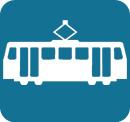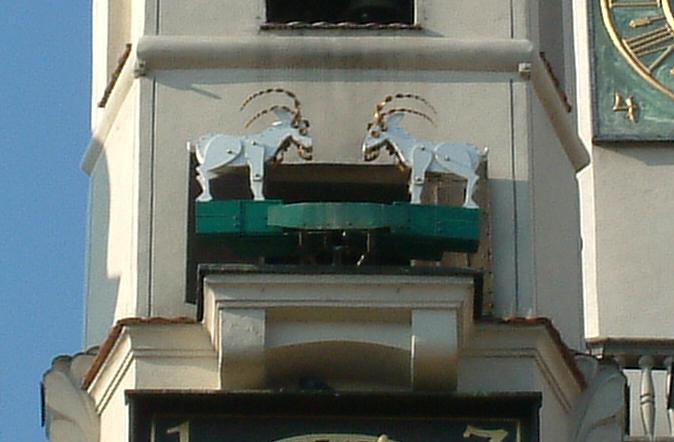Some valuable information for visitors comming to Poznan,Poland
Car - Poznan spaces paid parking zone. Parking Cards are purchased in vending spaces, standing around the center and in the district Jeżyce.During fairs near the fairgrounds is difficult to park your car. Especially before opening (9.00) and after (17.00) market day you will encounter great difficulties associated with automotive plugs. Paid parking zone in Poznan is valid from Monday to Friday from 10.00 - 18.00. On weekends, parking is free.http://www.zdm.poznan.pl/news.php?site=view&id=950

Hotels, Motels, Pensions- during big trade fairs is very difficult, or impossible to find a vacancy in Poznan hotels, so if you intend to arrive precisely at this time to Poznan, is advised much earlier to book accommodation. Fair Calendar http://www.pentagos.pl/fairs_schedule

Parking in Poznan - if you want to leave the car during your stay in Poznan on guarded parking, the cheapest and quite near the center of town car parkings are ,,bufor parkings''- fee per hour on this parking is about 3 zł, but if you want to visit old town, would be better to pay for parking in paid zone or just use some private parkings.

Komunikacja miejska - Public transportation - in Poznan there is time ticket system - 15 , 30, 60 minutes, 24 hours, 3 and 7 days. Ticket you can purchase in shops, special in Kiosks located on bus and tram stops or just buy it in tickets machines(Biletomat). Do not forget to validate your tickets. The Welcome Card must be validated when first used, but if you use single-ride tickets instead, be sure to validate these before boarding. If you forget to do so, you could be fined. A ticket for the entire 15-minute communication costs PLN 2, whether by day or night. If you're planning a long ride around town or a few days in Poznan, just get a day ticket or a week buy tickets in most kiosks or machines..

Aviation transport (Aiport)- the city has an international airport Poznan-Ławica. From here you can fly to over 20 airports mostly from Western Europe and in the summer also charter flights to popular resorts. In 2010 Poznan has served 1 419 121 passengers - it gives Poznan 6 - th position in Poland in terms of air traffic.
Arrival Bus line 78 - to go fro centre to ŁAWICA Aiport

Many of our hotels and accommodation in Poznan is located on the route between the airport and the Poznan International Fair - MTP, the Old Market - just go straigh Bukowska street. Bukowska street is mostly two-lane road, so going to the center you don't lose much time.
Poznań City Card
Explore Poznań with the Poznań City Card! This is the best and least expensive way to get to know our city and the adjacent area. Gain free or discounted admission to over sixty tourist attractions, free access to public transportation and a unique opportunity to save time and money.
The Poznań City Card comes in three versions: one-, two- and three-day.
Holders of the Poznań City Card are entitled, among other things, to:
- free use of public transportation,
- free admission to most of Poznań's museums,
- discounted admission to sports and recreational facilities,
- discounted admission to the Conservatory and the Zoo,
- discounts at hotels and restaurants.
Terms and conditions of use of the Poznań City Card
The Card is valid for holder only (as signed on front). The Card is valid only after first and last name and date of first use have been filled in. The Card may not be used by third parties and it is valid together with an ID. The period of validity begins to run on the date stated on the Card. In case of using the Card outside of Poznań, the Card is valid one day past the date shown on it.
When used as pass on public transportation, the Card is valid until 12:00 midnight on the last day on which the Card is valid (1, 2 or 3 days).
The Card comes with a guide booklet, which includes information on available attractions, discounts and free admission. You can only use a given attraction once; upon entry to the attraction, you should produce your Card and submit a proper coupon provided on the page that describes a specific attraction. The coupons are not valid if the Card has been lost or stolen.
The Poznań City Card comes in three versions:
- one - day - at 30 PLN
- two - day - at 40 PLN
- three - day - at 45 PLN
Interesting places in Poznan - Poznan Tourist Attractions - Places in Poznan, which is worth visiting - Interesting places in Poznan - Poznan Tour - Monuments in Poznań - Museums in Poznań
Poznań Town Hall or Ratusz is a building in the city of Poznań in western Poland, located in the Old Market Square (Stary Rynek) in the centre of the Old Town neighbourhood.The town hall was originally constructed as the administrative building of the city founded on the left bank of the Warta in 1253 (see History of Poznań). It was completed around 1300, during the reign of Wacław II Czeski, and was first documented in Latin in 1310 as Domus Consulum.[1] It was a one-storey Gothic building built upon a raised quadrangle. The cellars remain from this period of construction. The building was extended in the 15th century, and at the turn of the century a tower was built at the north-western corner. The interior was remodeled between 1504 and 1508. It served as the city's administrative building until 1939, and now houses a museum. The town hall was originally built in the late 13th century following the founding of the medieval city in 1253; it was rebuilt in roughly its present-day form, in mannerist style, with an ornate loggia, by Giovanni Battista di Quadro in 1550–1560. The display of mechanical fighting goats, played out daily at noon above the clock on the front wall of the building, is one of the city's main tourist attractions.
In 1536 the city suffered a major fire, which did serious damage to the town hall. Repair work was carried out in 1540–1542, particularly to the tower, but it remained unsafe. In 1550 the city' council commissioned Giovanni Battista di Quadro to carry out a major rebuilding. The work lasted until 1560. Di Quadro added an upper storey, extended the building towards the west, and added attic walls and a three-storey loggia.[2] A new clock (installed 1551) was made with three full faces and one half-face, and with goats added as a "comic element" (see next section).
In 1675 the tower, clock and goats were destroyed by lightning. The tower was rebuilt in 1690 to a height of 90 metres (300 ft). The top of the tower was destroyed in a hurricane of 1725. In 1781–1784 major renovation was carried out on the building thanks to the efforts of the city's "Committee of Good Order", and it obtained the basic form which it presents today. A Classical-style tower roof was designed by Bonawentura Solari, and on the top was a white eagle with a two-metre wing span. On the eastern elevation Franciszek Cielecki painted Jagiellonian kings, and under the central turret was placed a cartouche with the king's initials "SAR" (Stanislaus Augustus Rex).
The next major renovation was carried out in 1910–1913 (during the period of German rule), when black rustication was used to give the building a more "northern German" style.[3] The original late renaissance polychromy was destroyed.[3] An additional storey was added[4] and the goats, which had been absent since 1675, were restored to the tower in 1913. In October 1943 the Town Hall was the scene of Heinrich Himmler's Posen speeches. Following major damage in the Battle of Poznań (1945), the Town Hall was again rebuilt in 1945–1954, when the Renaissance character of the elevations was restored (and extracts from the constitution of the Polish People's Republic were added to the text displayed on the attic wall). The eagle, which had been kept hidden during the war, was returned to the tower in 1947. The mechanism that drives the goats was replaced in 1954, and again at the end of the century. Renovation carried out in 1992–2002 largely restored the building to its post-1784 appearance.
Public Transport Tram lines: 2, 5 , 9, 13, 16 MARCINKOWSKIEGO street



The goats and bugle call
Today the mechanical goats' butting display is performed daily at noon, preceded by the striking of the clock and the playing of a traditional bugle call (hejnał). At other hours between 7 am and 9 pm the same call is played on a carillon, installed in the tower in 2003. The daily appearance of the goats is one of Poznań's best-known tourist attractions.
A legend behind the original addition of the goats to the clock mechanism states that a cook, while preparing a banquet for the voivode and other dignitaries, had burnt a roast deer, and attempted to replace it by stealing two goats from a nearby meadow. The goats escaped and ran up the town hall tower, where they attracted the attention of the townspeople when they began to butt each other (according to some versions, this drew attention to a fire which might otherwise have done significant damage). Because of the entertainment provided, the voivode pardoned both the cook and the goats, and ordered that two mechanical goats be incorporated into the new clock being made for the building.
Another legend is associated with the hejnał. This says that Bolko, son of the tower's trumpeter, once took care of a crow whose wing had been shot through. The boy was then awoken at night by a gnome wearing a crown and purple cape, who thanked the boy for his kindness and handed him a small gold trumpet, telling him to blow it when in danger. After these words the gnome transformed into a crow and flew away. Years later, after Bolko had taken his father's place as trumpeter, when an attacking army was scaling Poznań's walls, Bolko remembered the present, ran to the top of the tower and began to play the trumpet. Dark clouds began to gather on the horizon, which turned out to be an enormous flock of crows that fell upon the attacking army and forced it to retreat. The trumpet was lost when Bolko dropped it in his astonishment, but the call which he played is still performed.
The City Scale (Waga miejska) can be found behind the Old Town Hall. It was the building where all goods to be sold on the market had to be weighted. two-story building in the Old Market Square in Poznan, with a very high, pitched roof. Originally the building was the seat in which the official for a small fee carried out the mass measurement of the goods. In the postwar years it housed the Registry Office in Poznań and to this day provides a wedding here.
In 2009, the weight of the operator and the tenant of the city was a public relations agency People Meet People, who transformed the building in the center of culture (exhibitions, concerts, performances, discussions, conferences, restaurant).
Public Transport Trams: 2, 5 , 9, 13, 16 MARCINKOWSKIEGO street



Raczynski Library in Poznan, Poznan City municipal library, built between 1822-1828 according to the idea of money and Count Edward Raczynski. The project developed from an unknown architect or a name of the French Roman: Ch. Percier and P. F. Fontaine.
Currently the building houses the management, collection and special exhibitions are held. The library also has custody of museums writers: Józef Ignacy Kraszewski, Kazimiera Iłłakowiczówna, Henryk Sienkiewicz and George Pertka.
Dojazd Tramwaj linie: 2, 5 , 9, 13, 16 MARCINKOWSKIEGO



Muzeum Narodowe w Poznaniu (MNP) – The National Museum in Poznan (MNP) - Museum of Art in Poznan was founded in 1919 as a museum of Wielkopolska (Great Poland it;'s name of part of Poland) Located on the Avenue Marcinkowski near Old Town. The National Museum in Poznan was created from several historic collections. The oldest collection of Polish and Slavic Antiquities in the Grand Duchy of Poznan was founded in 1857 (by help of the Poznan Society of Friends of Science - Poznanskie Towarzystwo Przyjaciół Nauk PTNP). Another element, which laid for the creation of today's institutions were Seweryn Mielżyński donations for PTPN - Poznanskie Towarzystwo Przyjacioł Nauk. In 1870 he bought a collection of Edward Rastawiecki and in 1871 gave it to museum. Moreover he bought landfor the future mUSEUM, opened for the public in 1882.
Dojazd Tramwaj linie: 2, 5 , 9, 13, 16 MARCINKOWSKIEGO



Kolegiata Matki Boskiej Nieustającej Pomocy i św. Marii Magdaleny w Poznaniu (także pod nazwą:Fara Poznańska) – barokowy kościół farny i zarazem kolegiacki pod wezwaniem św. Stanisława Biskupa Męczennika w Poznaniu, należący do parafii MB Nieustającej Pomocy i św. Marii Magdaleny, znajdujący się przy ul. Gołębiej, w jej południowej pierzei, u wylotu ul. Świętosławskiej. 29 czerwca 2010 Kongregacja Kultu Bożego i Dyscypliny Sakramentów, na mocy szczególnych pełnomocnictw udzielonych przez papieża Benedykta XVI, podniosła kościół do tytułu i godności bazyliki mniejszej.



Zamek Cesarski w Poznaniu (german language. Königliches Residenzschloß)
The Imperial Castle in Poznań, popularly called Zamek (Polish: Zamek Cesarski w Poznaniu, German: Königliches Residenzschloss Posen), is a palace in Poznań, Poland. It was constructed in 1910 by Franz Schwechten for William II, German Emperor, with significant input from William himself. Since its completion, the building has housed government offices of Germany (to 1918 and during the Second World War) and Poland (1918–1939, 1945–present).
–Construction began in 1905 (the first field work took place back in 1904) Five years later, the architect presented the keys of the emperor. (on 21 August 1910 during his visit in Poznan) At those times, the high cost of construction amounted to 5 million marks. It is the newest castle in Europe. In 1939, immediately after the commencement of hostilities, it was decided to rebuild the former imperial residence of Adolf Hitler's headquarters. As a result of this decision, in which he had taken part Albert Speer, completely changed the interior layout and their functions. All the main rooms are decorated in a totalitarian style of architecture of the Third Reich. In place of the former chapel was Hitler's personal office. As rumor says, the electrically heated balcony, from which the Führer had taken parade (the last survey, conducted during the renovation, did not confirm the existence of such an installation.) However, there is no evidence that Hitler ever was in Poznan. The castle has seen only photographs. Cabinet was decorated just like its counterpart in the Reich Chancellery in Berlin (his design was unchanged to this day, and often serves as a decoration film)



Teatr Wielki im. Stanisława Moniuszki w Poznaniu - powstał według projektu Maxa Littmanna z monachijskiej pracowni Heilmann und Littman w przeciągu 18 miesięcy jako nowa siedziba Teatru Miejskiego, który mieścił się dotychczas w przestarzałym budynku Arkadii. Pierwsze przedstawienie – "Czarodziejski flet" W. A. Mozarta – odbyło się w 1910. W 1919 przeszedł w ręce polskie. W okresie międzywojennym miały tu miejsce światowa prapremiera "Legendy Bałtyku" Feliksa Nowowiejskiego, "Margiera" Konstantego Gorskiego i polska premiera "Harnasi" – baletu Karola Szymanowskiego. Podczas walk w 1945 budynek uniknął większych zniszczeń, pomimo że stanowił niemiecki punkt oporu. W 1949 patronem poznańskiej opery został Stanisław Moniuszko.



"Stary Browar" –Shopping, Art and Business "STARY BROWAR - Old Brewery" - the center of commerce and art, built in November 2003, located in the city center at Półwiejska street No. 42. It is a combination of commercial property and art galleries. The total area is approximately 130 000 m².In Old Brewery is located approximately 210 retail outlets and restaurants. Design of the building is kept in stile of former brewery of Huggers Familly. The investor was a company owned by Fortis Grazyna Kulczyk. Interior passages were designed by Ryszard Kaja.
Dojazd Tramwaj linie: 6,11,12,10 PÓŁWIEJSKA



Stare Zoo w Poznaniu –
Old Zoo in Poznan - the third in according to age polish zoo. 1-st in Torun was founded in 1797, Zoological Garden in Wroclaw was founded in 1865. Interesting news for trade fair visitors and tourists who have accommodation near the fairgrounds - Old Zoo in 2010 was made into a cite park and admission is free. I really recommend this place for a walk with friends or family.
Dojazd Tramwaj linii 2 GAJOWA



Nowe Zoo w Poznaniu – zlokalizowany we wschodnim klinie zieleni Poznania ogród zoologiczny zajmujący 117 ha (co czyni go drugą pod względem powierzchni placówką tego typu w Polsce - za Miejskim Ogrodem Zoologicznym Wybrzeża). Na jego bogato ukształtowanym terenie znajduje się dolina z linią sztucznych stawów o łącznej powierzchni 16 ha (największy z nich ma powierzchnię 6 ha, czyli więcej niż Stare Zoo). W pagórkowatym terenie znajduje się również zabytkowy pruski Fort III z 1881 roku, stanowiący element zewnętrznego pierścienia fortyfikacji Twierdzy Poznań.



Malta — można tu pojeździć na rolkach po gładkich alejkach lub rowerem po pięknych ścieżkach. Dzieci znajdą rozrywkę w licznych placach zabaw. Można cały rok pojeździć na nartach lub przejechać krętą trasą letniego toru saneczkowego. Wokół jeziora zawsze sie coś dzieje od pokazów po wielkie imprezy masowe typu koncerty i coroczny Festiwal Teatralny "Malta". Znajdziecie tutaj też Letnie Kino oferujące kinowe nowości oraz jedyną w swoim rodzaju Maltańska Scenę Muzyczną na Wodzie. Nad Maltą organizowane są każdego roku Międzynarodowe Regaty kajakarskie.
Dojazd Tramwaj linie: 1, 4, 6, 7, 8, 11 RONDO ŚRÓDKA Autobus linie: 50, 57, 63, 67, 72, 73, 83, 85 RONDO ŚRÓDKA



Malta Ski – centrum rekreacyjne znajdujące się w Poznaniu na południowym brzegu Jeziora Maltańskiego. Jego historia sięga lat 80. XX wieku, gdy rozpoczęto zagospodarowywać tereny otaczające Jezioro. Powstała wówczas koncepcja usypania sztucznego stoku narciarskiego. Usypano go na zboczu Kopca Wolności. Początkowo można było z niego korzystać tylko w okresie zimy. W 1992 roku powstał pomysł by stworzyć w tym miejscu pierwsze w byłym bloku wschodnim całoroczne centrum narciarstwa. Pomysł zrealizowano i pokryty sztuczną nawierzchnią stok otwarto 21 lutego 1993. Z czasem dodawano kolejne atrakcje takie jak letni tor saneczkowy, pole do minigolfa i pole do nauki gry w golfa a także darmowe letnie kino.
Dojazd Tramwaj linie: 1, 4, 6, 7, 8, 11 RONDO ŚRÓDKA Autobus linie: 50, 57, 63, 67, 72, 73, 83, 85 RONDO ŚRÓDKA



Międzynarodowe Targi Poznańskie (MTP) to lider polskiego przemysłu targowego. Posiadają niemal 50% udziałów w rynku targowym w Polsce i są drugim organizatorem targów w Europie Środkowo-Wschodniej. Jako jedyny ośrodek w Polsce Poznań został ujęty w światowym rankingu miast targowych AUMA (33 miejsce w 2008 r.)
Dojazd Tramwaj linie: 5,6,10,11,12,14 MOST DWORCOWY



Palmiarnia Poznańska – dydaktyczno-wystawowa placówka botaniczna znajdująca się w poznańskim Parku Wilsona. Na powierzchni 4600 m² (46 000 m³) w 12 pawilonach (część jest niedostępna dla publiczności - rozmnaża się w nich rośliny) prezentowanych jest około 1100 gatunków roślin, a w akwarium 170 gatunków ryb oraz około 50 gatunków roślin wodnych. Palmiarnia stanowi największe w kraju i jedno z największych w Europie[potrzebne źródło] sztucznych zbiorowisk roślinności tropikalnej.
Dojazd Tramwaj linie: 5, 8, 11, 14 PARK WILSONA



Cytadela - Jest to wzgórze nieco oddalone od centrum Poznania - do 1945 roku znajdował się tutaj pruski Fort. Cytadela, była ważnym węzłem systemu umocnień, który uczynił z Poznania pruską twierdzę. W lutym 1945 roku forteca stała się ostatnim punktem oporu hitlerowców. Obecnie na stokach Cytadeli znajdują się cmentarze, na których pochowani są żołnierze różnych narodowości, polegli w czasie I i II wojny światowej, Muzeum Armii "Poznań" oraz Muzeum Uzbrojenia. Cytadela jest także jednym z największych parków Poznania, chętnie odwiedzanym przez Poznaniaków. Wspaniałe miejsce na rower, rolki czy spacery. Nadmienimy, że cytadela poznańska znajduje się zaledwie chwilę spacerem od Starego Rynku w Poznaniu.
Dojazd Autobus linie: 51, 60, 67, 70, 74, 83, 90 GARBARY



Wypożyczalnia rowerów w Poznaniu
I Wypożyczalnia rowerów MALTA - Jeśli masz ochotę na rodzinną przejażdżkę. To oferta przygotowana jest dla Ciebie Wypozyczalnia znajduje się nieopodal stoku narciarskiego wypożyczalnię stwarza każdemu odwiedzającemu doskonałą okazję do zapoznania się z rozległymi nadmaltańskimi terenami. Spokojna trasa biegnie wokół jeziora wyasfaltowaną ścieżką. W wypożyczalni każdy znaleźć może propozycję dla siebie: od klasycznych rowerów górskich poprzez dwu, trzy i czteroosobowe gokarty, riksze, ekorowery do łyżworolek.
Adres: Wiankowa 2
II W okresie letnim wypożyczalnia rowerów przy pętli Poznańskiego Szybkiego Tramwaju na osiedlu Jana III Sobieskiego czynna będzie od poniedziałku do piątku w godzinach od 10 do 20. Podczas ostatniej godziny można jedynie oddawać pojazdy. Aby wypożyczyć dwuślad trzeba podpisać umowę z Miejskim Przedsiębiorstwem Komunikacyjnym w Poznaniu (można zrobić to na miejscu) oraz posiadać ważną KOMkartę imienną. Rowery są wtedy wypożyczane bez dodatkowych opłat.


Przejażdżka dorożką wokół Starego Rynku
Sezon na wycieczki dorożkarski zaczyna się od kwietnia i trwa do października.Trzech dorożkarzy zabieraja poznaniaków i turystów na wycieczki wokół Starego Rynku. Mają oni podpisaną umowę z wydziałem dróg i mostów. Za przejazd wokół Starego Rynku zapłacimy około 10 zł,jeżeli będziemy chcieli pojechać malowniczymi uliczkami przy Starym Rynku zapłacimy dodatkowo 5zł












